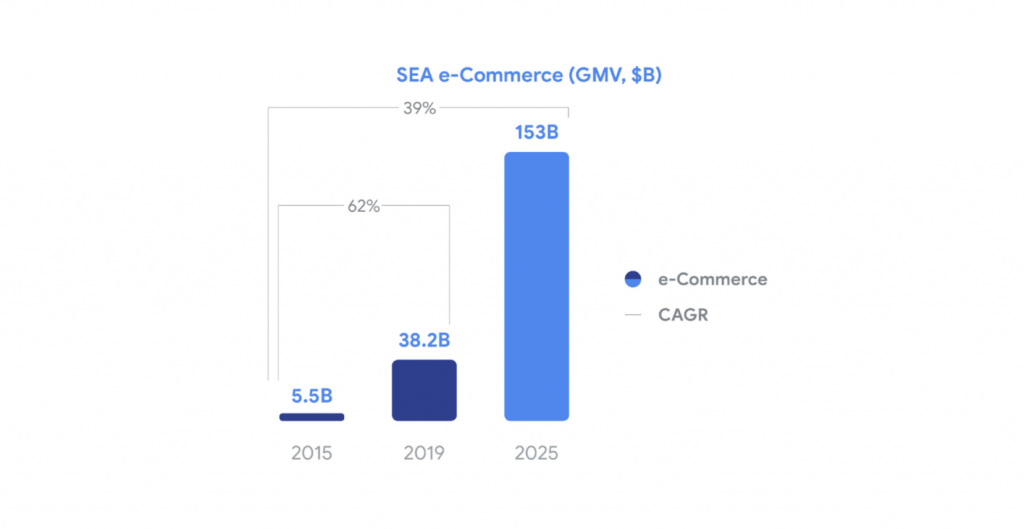Cơ hội nhiều hơn luôn dẫn đến mức độ cạnh tranh tăng lên. Điều quan trọng là bạn phải xác định được sản phẩm bạn sẽ bán. Lựa chọn của bạn sẽ ảnh hưởng nhiều hơn đến nhiều yếu tố khác như phương thức vận chuyển, chi phí, sản xuất hay lưu kho.

Dù bạn đã có hay chưa có công việc kinh doanh, bạn cũng nên đầu tư thời gian để có thêm kiến thức về sản phẩm của mình. Bạn có thể tập trung vào những sản phẩm là lợi thế của bạn, đem lại hiệu quả kinh tế cao và có tiềm năng phát triển.
Muốn khách hàng coi trọng thương hiệu của bạn, hãy tập trung vào các vấn đề của khách hàng và cố gắng giải quyết bằng cách cung cấp cho họ sản phẩm của bạn như một giải pháp.
Tìm nguồn hàng
Chi phí kinh doanh và hoạt động kinh doanh của bạn phụ thuộc rất nhiều vào nhà cung cấp bạn chọn. Hãy tính toán chi phí sản xuất, giá vận chuyển và lợi nhuận khi bạn chọn nhà cung cấp cho mình.
Có hai hình thường gặp tại thị trường thương mại điện tử Indonesia là làm việc với nhà sản xuất hoặc Drop shipping
Drop shipping
Ưu điểm:
- Không phải lo lắng về vấn đề đóng gói và gửi hàng vì nhà cung cấp sẽ thực hiện tiếp nhận và xử lý đơn hàng.
- Nguy cơ tồn kho bằng 0 vì bạn không cần trực tiếp lưu kho sản phẩm.
- Chi phí thấp, tiết kiệm được các chi phí kho, văn phòng, nhân viên..
Nhược điểm:
- Lợi nhuận không cao
- Không kiểm soát được về chất lượng của các sản phẩm bạn gửi tới khách hàng dưới thương hiệu của bạn.
- Xuất hiện các vấn đề tiềm ẩn về hàng tồn kho
Tự sản xuất hoặc nhập sản phẩm về lưu kho
Ưu điểm:
- Bạn kiểm soát được chất lượng sản phẩm đến tay khách hàng
- Kiểm soát được chi phí, lợi nhuận cao hơn
Nhược điểm:
- Đầu tư ban đầu cao: Chi phí hàng tồn kho hay đầu tư trang thiết bị phục vụ sản xuất là một khoản đầu tư không nhỏ
- Tốn nhiều thời gian ngiên cứu, phát triển sản phẩm
Phân tích thị trường
Bước tiếp theo bạn nên tập trung vào việc tìm hiểu tình trạng hiện tại của thị trường Indonesia, về đối thủ cạnh tranh của bạn. Tìm hiểu về điểm mạnh, điểm yếu, đối tượng khách hàng và nhà cung cấp của họ.
Để thành công trong kinh doanh trực tuyến, bạn nên chắc chắn sâu sắc về nhóm người mua tiềm năng của mình. Nếu bạn không hiểu rõ khách hàng của mình và bạn sẽ không bao giờ có thể xây dựng được yếu tố tin cậy và đáp ứng các yêu cầu của họ. Bạn có thể sử dụng thông tin nhân khẩu học và tâm lý học từ các phân khúc thị trường có liên quan như: nơi ở, tuổi tác, giới tính, nghề nghiệp, tình trạng hôn nhân, thu nhập, sở thích, hay thời gian hoạt động trực tuyến.
Kinh doanh ở đâu?
Thương mại điện tử là một môi trường mới rộng mở để bạn sáng tạo công việc kinh doanh của mình. Lựa chọn nền tảng thương mại nào để kinh doanh hiệu quả và dễ dàng hơn cũng là một bước thiết yếu để tiếp cận tệp khách hàng mục tiêu của bạn.
2 nền tảng phổ biến nhất tại Indonesia là:
1. Sàn thương mại điện tử
Sàn thương mại điện tử là môi trường dễ dàng nhất để bắt đầu bán hàng trực tuyến với người mới tham gia kinh doanh trực tuyến. Bạn có thể tạo tài khoản người bán với các sàn thương mại điện tử với một số chi tiết cơ bản như số đăng ký VAT, đặc điểm nhận dạng, địa chỉ và tài khoản ngân hàng.
Các sàn thương mại điện tử có chiết khấu không cao, giúp bạn tiết kiệm chi phí bán hàng. Họ đã có sẵn lượng lớn khách hàng truy cập mỗi ngày, giúp bạn mở rộng phạm vi tiếp cận. Các thị trường trực tuyến phổ biến ở Indonesia bao gồm Lazada, Zalora và Shopee…
2. Website bán hàng
Để xây dựng một kênh bán hàng trực tuyến chuyên nghiệp và đáng tin cậy, website chắc chắn là lựa chọn không thể bỏ qua. Trên website của bạn sẽ thể hiện được sứ mệnh tầm nhìn của thương hiệu, toàn bộ sản phẩm được sắp xếp chuyên nghiệp giúp người mua dễ dàng mua sắm, thông tin liên hệ cũng như hệ thống hỗ trợ khách hàng.
Có rất nhiều nền tảng website hiện nay có thể giúp bạn thiết kế và vận hàng website bán hàng ở Indonesia như Magento, PrestaShop và Shopify.
Cả hai nền tảng – sàn thương mại điện tử và website bán hàng đều tốt như nhau để tạo ra nguồn lợi nhuận bền vững. Tuy nhiên, để tìm thấy thành công trực tuyến thực sự, bạn phải nghĩ đến việc bán hàng trên nhiều kênh để tăng doanh thu của mình.
3. Bán hàng đa kênh
Người bán bán trên nhiều kênh bán hàng tạo ra doanh thu cao hơn 190% so với người bán bán trên một kênh duy nhất.
Lựa chọn tốt nhất cho bất kỳ người bán trực tuyến nào là bán trên cả sàn và website để họ có thể tạo ra doanh thu bền vững. Trong khi bán hàng trên các sàn cung cấp cho bạn cơ hội bán hàng nhanh chóng thì việc có website sẽ giúp bạn quảng bá thương hiệu của mình.
Tại sao nên quản lý việc bán hàng trực tuyến thông qua phần mềm bán hàng đa kênh?
Các ứng dụng phần mềm bán hàng đa kênh cho phép bạn quản lý việc bán hàng trực tuyến hoàn chỉnh của mình trên nhiều kênh tại một nơi. Thay vì quản lý từng kênh riêng lẻ, bạn có thể tích hợp tất cả các kênh mình bán vào một phần mềm bán hàng đa kênh một cách đơn giản. Điều này không chỉ tự động hóa toàn bộ hoạt động bán hàng của bạn mà còn giúp bạn tiết kiệm thời gian, công sức và tiền bạc.

Thị trường thương mại điện tử đòi hỏi bạn phải luôn tập trung vào phân tích sản phẩm và thị trường để tối đa hóa lợi nhuận của mình. Đối tượng mục tiêu của bạn không còn bị giới hạn ở bất kỳ thành phố hoặc quốc gia cụ thể nào và bạn có cơ hội tối đa để quảng bá thương hiệu của mình. Mặc dù đó là một quá trình khá thử thách, nhưng chìa khóa thành công của bạn là sự làm việc thông minh không ngừng, sử dụng các công cụ tốt nhất và kết hợp chiến lược thông minh.
"> Đến cuối năm 2020, thói quen tiêu dùng của người Indonesia nói riêng và khu vực Đông Nam Á nói chung có nhiều thay đổi rõ rệt. Sự phát triển của Thương mại điện tử Indonesia giúp việc bán hàng và mua sắm trở nên dễ dàng hơn, mở ra cơ hội lớn cho các nhà bán lẻ và doanh nghiệp. Tuy nhiên, nếu không có nghiên cứu, chiến lược và kế hoạch phù hợp, việc kinh doanh trực tuyến thành công là không thể.
Thương mại điện tử không chỉ mang lại khả năng hiển thị rộng rãi mà còn giúp các nhà bán lẻ hay doanh nghiệp khám phá thị trường toàn cầu. Nếu bạn đã quyết định kinh doanh trực tuyến và mong muốn thành công, Boxme sẽ hướng dẫn bạn từng bước để tham gia Thương mại điện tử Indonesia.
Kinh doanh cái gì? Kinh doanh thế nào?
Cơ hội nhiều hơn luôn dẫn đến mức độ cạnh tranh tăng lên. Điều quan trọng là bạn phải xác định được sản phẩm bạn sẽ bán. Lựa chọn của bạn sẽ ảnh hưởng nhiều hơn đến nhiều yếu tố khác như phương thức vận chuyển, chi phí, sản xuất hay lưu kho.

Dù bạn đã có hay chưa có công việc kinh doanh, bạn cũng nên đầu tư thời gian để có thêm kiến thức về sản phẩm của mình. Bạn có thể tập trung vào những sản phẩm là lợi thế của bạn, đem lại hiệu quả kinh tế cao và có tiềm năng phát triển.
Muốn khách hàng coi trọng thương hiệu của bạn, hãy tập trung vào các vấn đề của khách hàng và cố gắng giải quyết bằng cách cung cấp cho họ sản phẩm của bạn như một giải pháp.
Tìm nguồn hàng
Chi phí kinh doanh và hoạt động kinh doanh của bạn phụ thuộc rất nhiều vào nhà cung cấp bạn chọn. Hãy tính toán chi phí sản xuất, giá vận chuyển và lợi nhuận khi bạn chọn nhà cung cấp cho mình.
Có hai hình thường gặp tại thị trường thương mại điện tử Indonesia là làm việc với nhà sản xuất hoặc Drop shipping
Drop shipping
Ưu điểm:
- Không phải lo lắng về vấn đề đóng gói và gửi hàng vì nhà cung cấp sẽ thực hiện tiếp nhận và xử lý đơn hàng.
- Nguy cơ tồn kho bằng 0 vì bạn không cần trực tiếp lưu kho sản phẩm.
- Chi phí thấp, tiết kiệm được các chi phí kho, văn phòng, nhân viên..
Nhược điểm:
- Lợi nhuận không cao
- Không kiểm soát được về chất lượng của các sản phẩm bạn gửi tới khách hàng dưới thương hiệu của bạn.
- Xuất hiện các vấn đề tiềm ẩn về hàng tồn kho
Tự sản xuất hoặc nhập sản phẩm về lưu kho
Ưu điểm:
- Bạn kiểm soát được chất lượng sản phẩm đến tay khách hàng
- Kiểm soát được chi phí, lợi nhuận cao hơn
Nhược điểm:
- Đầu tư ban đầu cao: Chi phí hàng tồn kho hay đầu tư trang thiết bị phục vụ sản xuất là một khoản đầu tư không nhỏ
- Tốn nhiều thời gian ngiên cứu, phát triển sản phẩm
Phân tích thị trường
Bước tiếp theo bạn nên tập trung vào việc tìm hiểu tình trạng hiện tại của thị trường Indonesia, về đối thủ cạnh tranh của bạn. Tìm hiểu về điểm mạnh, điểm yếu, đối tượng khách hàng và nhà cung cấp của họ.
Để thành công trong kinh doanh trực tuyến, bạn nên chắc chắn sâu sắc về nhóm người mua tiềm năng của mình. Nếu bạn không hiểu rõ khách hàng của mình và bạn sẽ không bao giờ có thể xây dựng được yếu tố tin cậy và đáp ứng các yêu cầu của họ. Bạn có thể sử dụng thông tin nhân khẩu học và tâm lý học từ các phân khúc thị trường có liên quan như: nơi ở, tuổi tác, giới tính, nghề nghiệp, tình trạng hôn nhân, thu nhập, sở thích, hay thời gian hoạt động trực tuyến.
Kinh doanh ở đâu?
Thương mại điện tử là một môi trường mới rộng mở để bạn sáng tạo công việc kinh doanh của mình. Lựa chọn nền tảng thương mại nào để kinh doanh hiệu quả và dễ dàng hơn cũng là một bước thiết yếu để tiếp cận tệp khách hàng mục tiêu của bạn.
2 nền tảng phổ biến nhất tại Indonesia là:
1. Sàn thương mại điện tử
Sàn thương mại điện tử là môi trường dễ dàng nhất để bắt đầu bán hàng trực tuyến với người mới tham gia kinh doanh trực tuyến. Bạn có thể tạo tài khoản người bán với các sàn thương mại điện tử với một số chi tiết cơ bản như số đăng ký VAT, đặc điểm nhận dạng, địa chỉ và tài khoản ngân hàng.
Các sàn thương mại điện tử có chiết khấu không cao, giúp bạn tiết kiệm chi phí bán hàng. Họ đã có sẵn lượng lớn khách hàng truy cập mỗi ngày, giúp bạn mở rộng phạm vi tiếp cận. Các thị trường trực tuyến phổ biến ở Indonesia bao gồm Lazada, Zalora và Shopee…
2. Website bán hàng
Để xây dựng một kênh bán hàng trực tuyến chuyên nghiệp và đáng tin cậy, website chắc chắn là lựa chọn không thể bỏ qua. Trên website của bạn sẽ thể hiện được sứ mệnh tầm nhìn của thương hiệu, toàn bộ sản phẩm được sắp xếp chuyên nghiệp giúp người mua dễ dàng mua sắm, thông tin liên hệ cũng như hệ thống hỗ trợ khách hàng.
Có rất nhiều nền tảng website hiện nay có thể giúp bạn thiết kế và vận hàng website bán hàng ở Indonesia như Magento, PrestaShop và Shopify.
Cả hai nền tảng – sàn thương mại điện tử và website bán hàng đều tốt như nhau để tạo ra nguồn lợi nhuận bền vững. Tuy nhiên, để tìm thấy thành công trực tuyến thực sự, bạn phải nghĩ đến việc bán hàng trên nhiều kênh để tăng doanh thu của mình.
3. Bán hàng đa kênh
Người bán bán trên nhiều kênh bán hàng tạo ra doanh thu cao hơn 190% so với người bán bán trên một kênh duy nhất.
Lựa chọn tốt nhất cho bất kỳ người bán trực tuyến nào là bán trên cả sàn và website để họ có thể tạo ra doanh thu bền vững. Trong khi bán hàng trên các sàn cung cấp cho bạn cơ hội bán hàng nhanh chóng thì việc có website sẽ giúp bạn quảng bá thương hiệu của mình.
Tại sao nên quản lý việc bán hàng trực tuyến thông qua phần mềm bán hàng đa kênh?
Các ứng dụng phần mềm bán hàng đa kênh cho phép bạn quản lý việc bán hàng trực tuyến hoàn chỉnh của mình trên nhiều kênh tại một nơi. Thay vì quản lý từng kênh riêng lẻ, bạn có thể tích hợp tất cả các kênh mình bán vào một phần mềm bán hàng đa kênh một cách đơn giản. Điều này không chỉ tự động hóa toàn bộ hoạt động bán hàng của bạn mà còn giúp bạn tiết kiệm thời gian, công sức và tiền bạc.

Thị trường thương mại điện tử đòi hỏi bạn phải luôn tập trung vào phân tích sản phẩm và thị trường để tối đa hóa lợi nhuận của mình. Đối tượng mục tiêu của bạn không còn bị giới hạn ở bất kỳ thành phố hoặc quốc gia cụ thể nào và bạn có cơ hội tối đa để quảng bá thương hiệu của mình. Mặc dù đó là một quá trình khá thử thách, nhưng chìa khóa thành công của bạn là sự làm việc thông minh không ngừng, sử dụng các công cụ tốt nhất và kết hợp chiến lược thông minh.






 Login
Login Register
Register











